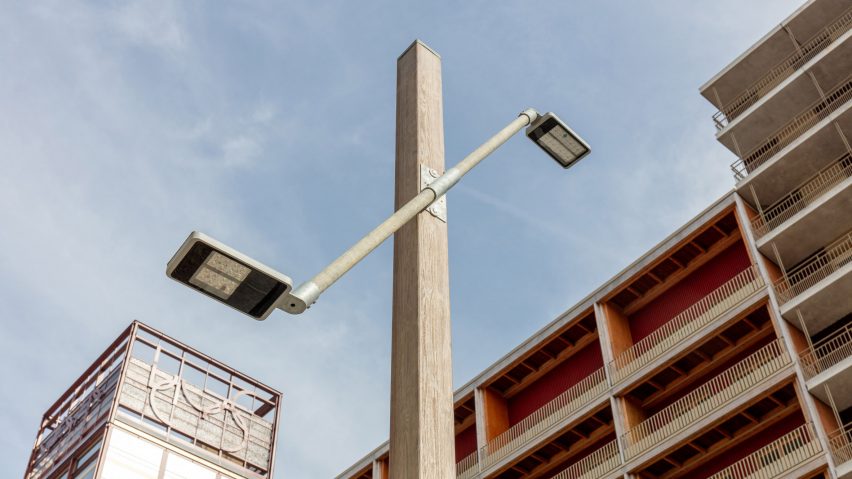
Paris 2024 Olympic Village features street lamps made from salvaged building materials
Ahead of this summer's Olympic Games in Paris, design offices Concepto and Studio 5.5 have installed 350 street lights made from salvaged scaffolding poles and lampposts in the athletes' village.
The lighting project is part of a scheme overseen by the Olympic Games delivery authority Solideo with the aim to reduce carbon emissions by 47 per cent compared to a conventional project.
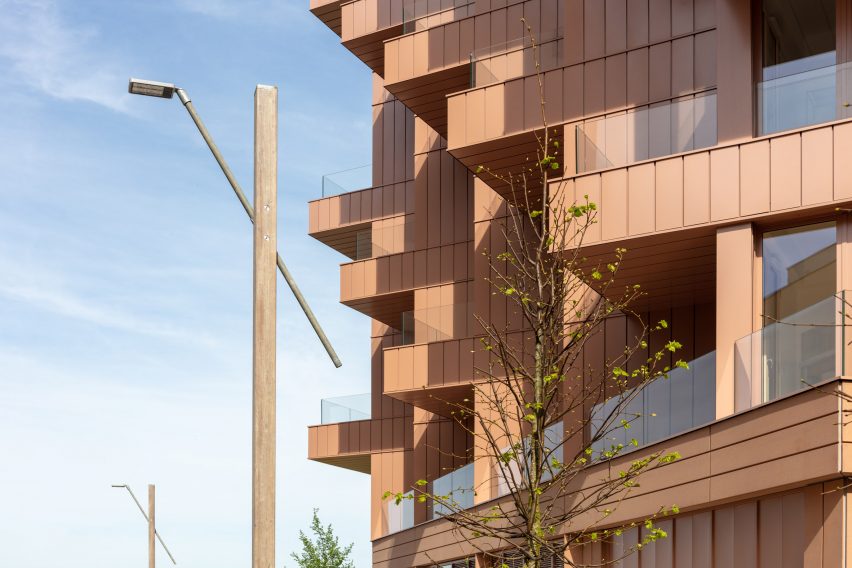
Landscape architecture firm Agence TER, which was responsible for master planning the public areas, collaborated with Studio 5.5 to create a low-carbon materials charter for these spaces that includes lighting and street furniture.
Putting this sustainable design agenda into practice, the street lighting was designed to be manufactured using decommissioned lampposts and components sourced from building sites.
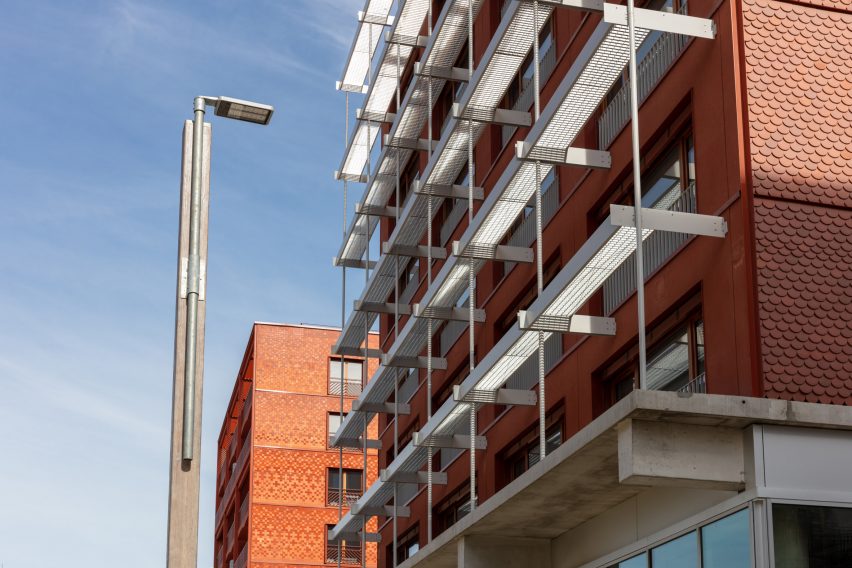
"We had to persuade policymakers and local authorities that these reused lampposts represented future aesthetics and strong sustainable development policies," Studio 5.5 co-founder and partner Anthony Lebossé told Dezeen.
"It's easier to opt for novelty from catalogues but as we were creating the Olympic Village, we wanted to set an example of designing differently."
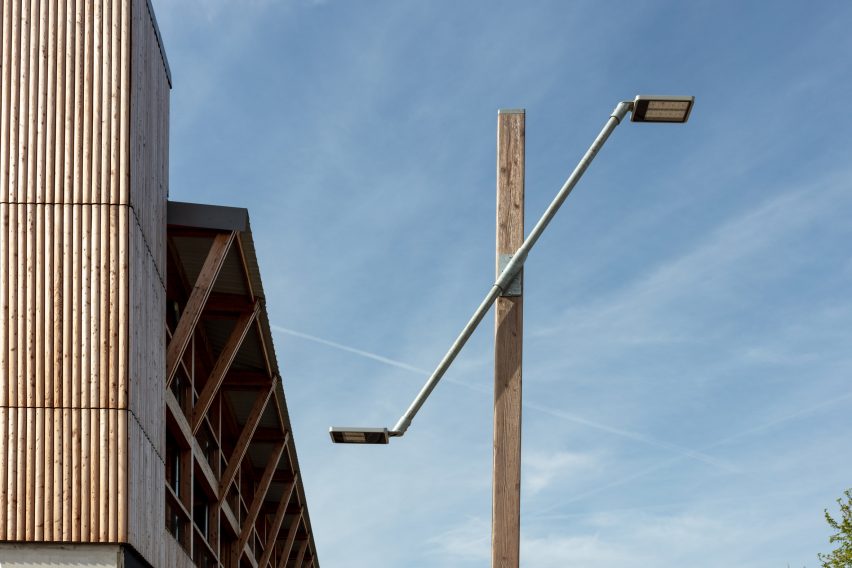
Lighting design firm Concepto was tasked with creating a plan for illuminating the village, which involved defining the locations and orientation of each of the 350 street lampposts to ensure they provide light where it is needed.
Lebossé and his colleagues worked with Concepto to develop a proposal for lights that could be produced at scale using salvaged parts whilst being easy to maintain.
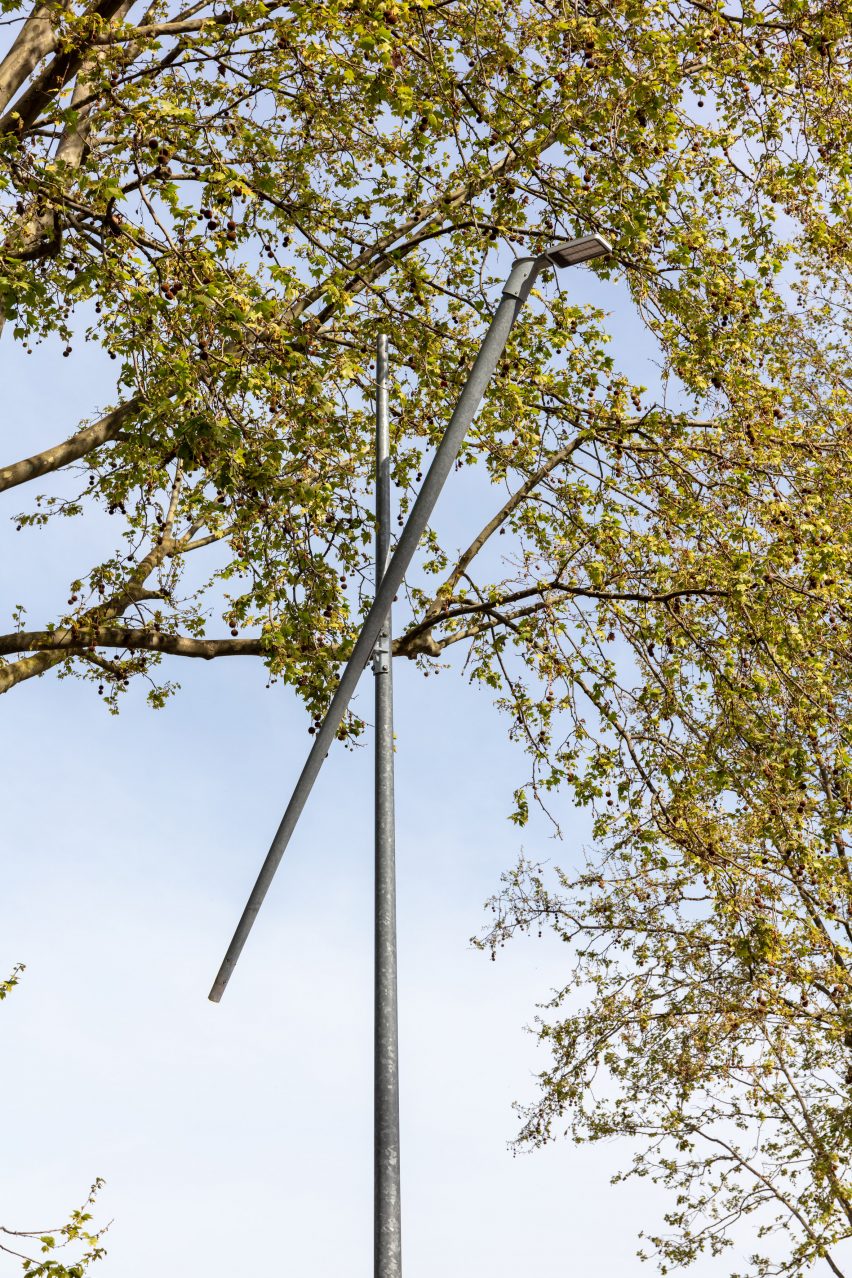
"Lampposts usually require heavy investment for moulds and custom manufacturing, making maintenance costly," Lebossé pointed out.
"We aimed to maximise reuse while ensuring maintainability by local authorities. The assemblies are mechanical and reversible to allow for economical and long-lasting maintenance."
The old lampposts, with their generic and standardised shapes, have been phased out by many local authorities in favour of more architecturally innovative designs that are produced in a wide range of colours and materials, Lebossé explained.
The lampposts created for the Olympic Village vary in shape, size and construction, with the tallest examples being made entirely from reused galvanised steel lampposts and the shorter ones featuring laminated wood poles.
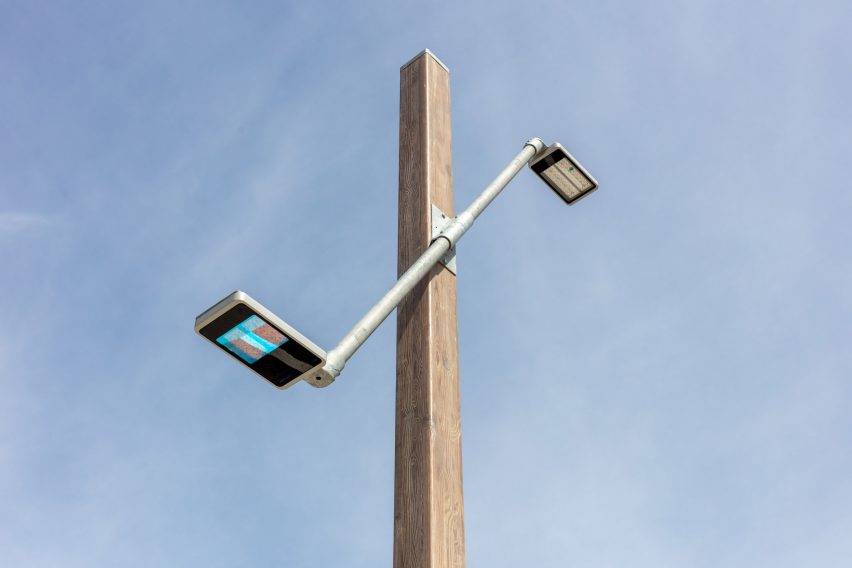
Each street lamp has a crosspiece comprising a salvaged scaffolding pole, supporting either one or two energy-efficient LED light sources.
The crosspieces are angled to direct illumination onto the road while rising high enough to avoid trees and allow tall vehicles such as buses and fire engines to pass underneath.
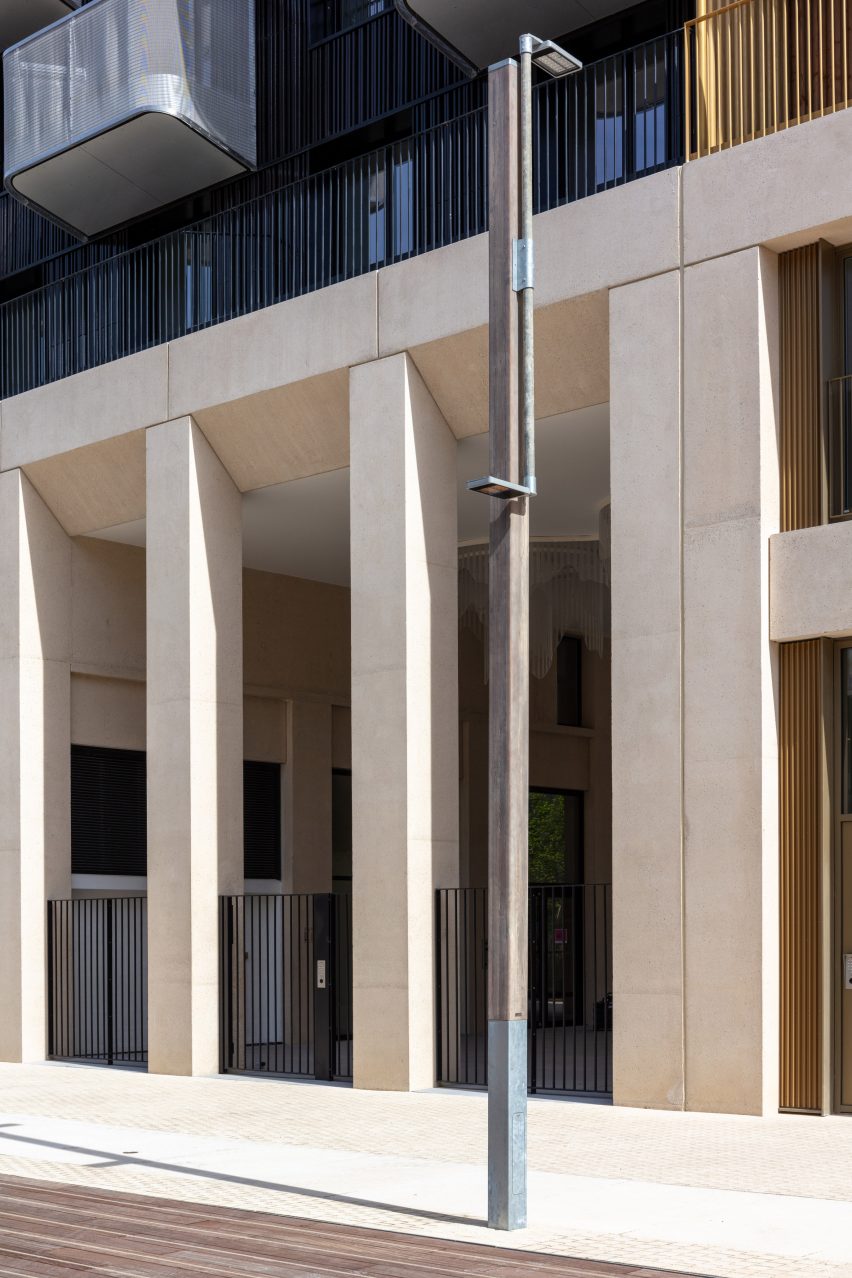
In places requiring additional illumination for pedestrians, a second light source is placed at the lower end of the crosspiece. This allowed the studios to reduce the overall number of fixtures that had to be produced.
The 350 lampposts will remain in place following the Olympic Games, forming part of the legacy phase that will see the new neighbourhoods incorporated into the towns of Saint-Denis and Saint-Ouen.
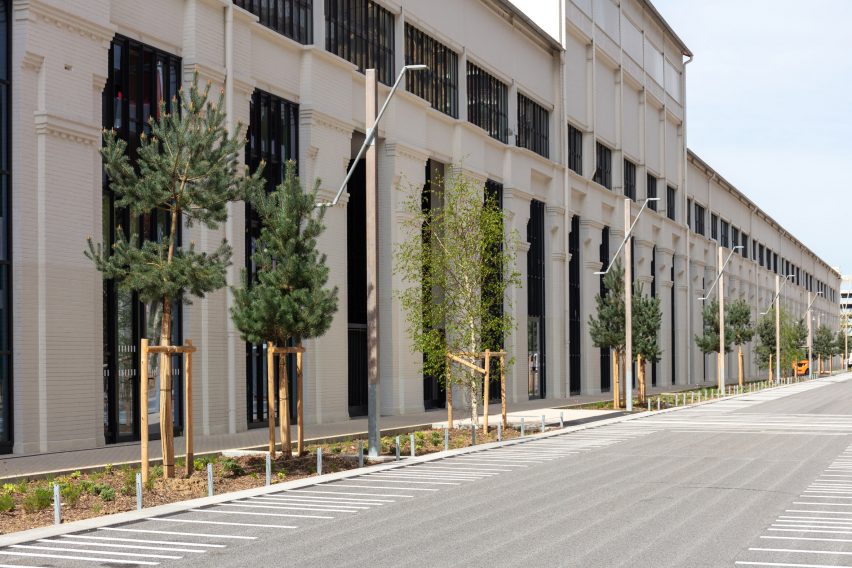
The Paris Olympics' organizing committee has committed to halving the emissions of this year's summer games compared with recent editions of the event in London and Rio.
With this goal, the timber aquatics centre by VenhoevenCS and Ateliers 2/3/4 is the only permanent venue constructed for the games, which will largely take place in temporary venues across the city and existing buildings such as the newly renovated Grand Palais.